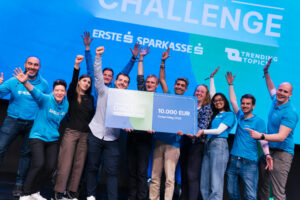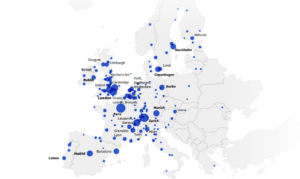EY study: Less companies dare to go public in an IPO

The ongoing tense geopolitical situation and the turnaround in interest rates are still having a major impact on the global economy. The IPO market is badly affected. Companies around the world are reluctant to go public, according to a new study by auditor EY. A total of 310 companies worldwide dared to go public– three percent less than in the similarly weak quarter of the previous year.
“Companies remain in the waiting position”
“Many companies remain in the waiting position and hope for better investor sentiment and higher market liquidity,” observes Stefan Uher, Head of Auditing at EY. But there is still movement in the market: “Volatility has fallen and the price level on the world stock exchanges is relatively high.”
However, due to the interest rate hikes, investors have become more selective when choosing their investment goals: “We have a buyer’s market. So it is all the more important for stock market candidates to be able to offer a high-quality equity story and to be able to demonstrate the sustainability of the business model and good corporate governance.”
Developments in the different regions varied greatly in the second quarter. In China, for example, the number of IPOs increased by 28 percent and the issue volume by 10 percent, while in Europe fewer companies dared to go public. In Europe, the number of IPOs fell by 27 percent to 33, but the issue volume rose by 58 percent to US$ 2.7 billion.
The European IPO market needs liquidity
There was also growth in the USA – by 15 percent in the number of IPOs and even by 167 percent in issue volume. However, with 31 IPOs raising a combined $6.3 billion, IPO activity has remained at a relatively low level by long-term comparison. According to Uher, the European IPO market could recover once the much-needed liquidity is restored. But: “Investors will continue to be selective and focus on companies with solid fundamentals and a proven track record.”
Technology companies accounted for USD 10 billion of the global issuance volume of 39 billion US dollars. Additionally, three of the top five IPOs in the second quarter were tech IPOs: Chinese semiconductor makers Nexchip Semiconductor and SMEC raised $1.9 billion and $1.8 billion, respectively, and Chinese solar panel maker CSI Solar raised just under $1 billion. However, the largest IPO of the quarter took place in the USA: the consumer health division of the pharmaceutical company Johnson & Johnson achieved an issue volume of 4.4 billion US dollars in its IPO under the name Kenvue.
SPAC boom is over
In the first quarter, 13 new SPACs (special purpose acquisition companies) were issued worldwide with a total volume of 1.6 billion US dollars. Compared to the same period last year, the issue volume has shrunk by 52 percent, and the number of SPAC issues even fell by 64 percent.
“There are hardly any new SPAC issues, the boom is over,” states Uher. And existing SPACs are under a lot of pressure: “Many are looking for suitable candidates for mergers, and time is short to invest the collected capital sensibly within the term. SPAC investors also often reclaim their deposits, leaving less money than planned for the intended merger with an operating company. In addition, the predominantly poor share performance of SPAC mergers is weighing on investor sentiment.”





























